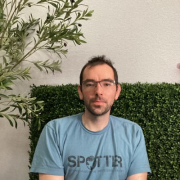

Splunk Enterprise Security and Seceon Open Threat Management Platform compete in cybersecurity. Splunk has a larger market footprint and superior customer support, while Seceon excels in enhanced automation and cost-effectiveness, providing value for specific market segments.
Features: Splunk Enterprise Security offers ease of searching large amounts of data, great log management capabilities, and a scalable and easy-to-use platform. It stands out with capabilities like fast operational intelligence, data ingestion from diverse sources, and comprehensive compliance support. Splunk's Search Processing Language (SPL) and real-time analytics significantly enhance performance. On the other hand, Seceon Open Threat Management Platform is recognized for its AI-based solutions, comprehensive threat detection, and response capabilities that span across cyber disciplines. It integrates real-time response and automated remediation, catering especially to finance and healthcare sectors by offering on-premise solutions, reducing human intervention, and thereby lowering costs.
Room for Improvement: Splunk Enterprise Security users may encounter challenges with managing and correlating data across diverse sources. The complexity of deployment and higher initial costs also present areas for refinement. In contrast, Seceon Open Threat Management could enhance its features by expanding integration capabilities with existing security tools. Further refinement in threat detection specificity could assist in reducing alert fatigue among users. Additionally, enriching the user interface to streamline navigation and reporting will improve overall user experience.
Ease of Deployment and Customer Service: Splunk Enterprise Security is known for its complex deployment, which demands skilled resources due to its extensive features. Despite this, it offers robust customer support throughout the setup process, ensuring assistance is readily available. Seceon Open Threat Management Platform provides a simplified deployment model, designed to facilitate quicker implementations. It is supported by responsive customer service, allowing for agile and efficient deployments.
Pricing and ROI: Splunk Enterprise Security involves higher setup costs attributable to its feature richness and scalable infrastructure. The focus is on long-term ROI through its comprehensive security management capabilities. Conversely, Seceon Open Threat Management Platform offers a more affordable setup, delivering high ROI for budget-conscious businesses, especially smaller operations, by effectively managing threats with cost-efficient solutions. The differences in their cost structures and value delivery play a pivotal role in their market positions.
| Product | Market Share (%) |
|---|---|
| Splunk Enterprise Security | 9.2% |
| Seceon Open Threat Management Platform | 0.8% |
| Other | 90.0% |


| Company Size | Count |
|---|---|
| Small Business | 8 |
| Midsize Enterprise | 5 |
| Large Enterprise | 1 |
| Company Size | Count |
|---|---|
| Small Business | 109 |
| Midsize Enterprise | 49 |
| Large Enterprise | 257 |
Seceon Open Threat Management Platform is a comprehensive cybersecurity solution that offers real-time threat detection, analysis, and response capabilities. It leverages advanced AI and machine learning algorithms to provide proactive threat hunting and automated incident response.
With its intuitive dashboard, users can gain complete visibility into their network, applications, and endpoints, enabling them to identify and mitigate potential risks effectively. The platform integrates seamlessly with existing security infrastructure, consolidating data from various sources for centralized monitoring and analysis.
Its threat intelligence feeds and behavioral analytics enable the identification of both known and unknown threats, ensuring comprehensive protection against advanced cyber attacks. Seceon Open Threat Management Platform empowers security teams with actionable insights, enabling them to prioritize and respond to threats swiftly. With its automated remediation capabilities, it minimizes the impact of attacks and reduces response time. The platform also offers customizable reporting and compliance management features, facilitating regulatory compliance and providing stakeholders with comprehensive security status updates.
Seceon Open Threat Management Platform is a robust and scalable solution that caters to the evolving cybersecurity needs of organizations across industries.
Splunk Enterprise Security delivers powerful log management, rapid searches, and intuitive dashboards, enhancing real-time analytics and security measures. Its advanced machine learning and wide system compatibility streamline threat detection and incident response across diverse IT environments.
Splunk Enterprise Security stands out in security operations with robust features like comprehensive threat intelligence and seamless data integration. Its real-time analytics and customizable queries enable proactive threat analysis and efficient incident response. Integration with multiple third-party feeds allows detailed threat correlation and streamlined data visualization. Users find the intuitive UI and broad compatibility support efficient threat detection while reducing false positives. Despite its strengths, areas such as visualization capabilities and integration processes with cloud environments need enhancement. Users face a high learning curve, and improvements in automation, AI, documentation, and training are desired to maximize its potential.
What Are the Key Features of Splunk Enterprise Security?In specific industries like finance and healthcare, Splunk Enterprise Security is instrumental for log aggregation, SIEM functionalities, and compliance monitoring. Companies leverage its capabilities for proactive threat analysis and response, ensuring comprehensive security monitoring and integration with various tools for heightened operational intelligence.
We monitor all Security Information and Event Management (SIEM) reviews to prevent fraudulent reviews and keep review quality high. We do not post reviews by company employees or direct competitors. We validate each review for authenticity via cross-reference with LinkedIn, and personal follow-up with the reviewer when necessary.